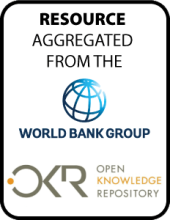Land Library
Welcome to the Land Portal Library. Explore our vast collection of open-access resources (over 74,000) including reports, journal articles, research papers, peer-reviewed publications, legal documents, videos and much more.
/ library resources
Showing items 1 through 9 of 31.The pattern of global land use has
important implications for the world's food and timber
supplies, bioenergy, biodiversity and other eco-system
services. However, the productivity of this resource is
This case study is one of six
evaluations of the implementation of the World Bank's
1991 Forest Strategy. This and the other cases (Brazil,
Cameroon, Costa Rica, India, and Indonesia) complement a
Livestock systems globally are changing
rapidly in response to human population growth,
urbanization, and growing incomes. This paper discusses the
linkages between burgeoning demand for livestock products,
This case study, one of six evaluations
in a series of country case studies, aims to understand the
implementation of the 1991 Forest Strategy in World Bank
operations and to obtain the views of the various
This case study is one of six
evaluations of the implementation of the World Bank's
1991 Forest Strategy. This and the other cases (Brazil,
Cameroon, China, Costa Rica, and India) complement a review
This case study is one of six
evaluations of the implementation of the World Bank's
1991 Forest Strategy. This and the other cases (Cameroon,
China, Costa Rica, India, and Indonesia) complement a review
Miombo woodlands stretch across Southern
Africa in a belt from Angola and the Democratic Republic of
Congo (DRC) in the west to Mozambique in the east. The
miombo region covers an area of around 2.4 million km. In
The urgent need to limit anthropogenic
carbon emissions has led to a global initiative to Reduce
Emissions from Deforestation and forest Degradation (REDD+).
But designing national architectures for REDD+ that
The World Bank's revised forest
policy came into being in 2002 and covers all types of
forests. It has the following key objectives: (i) harnessing
the potential of forests to reduce poverty in a sustainable


